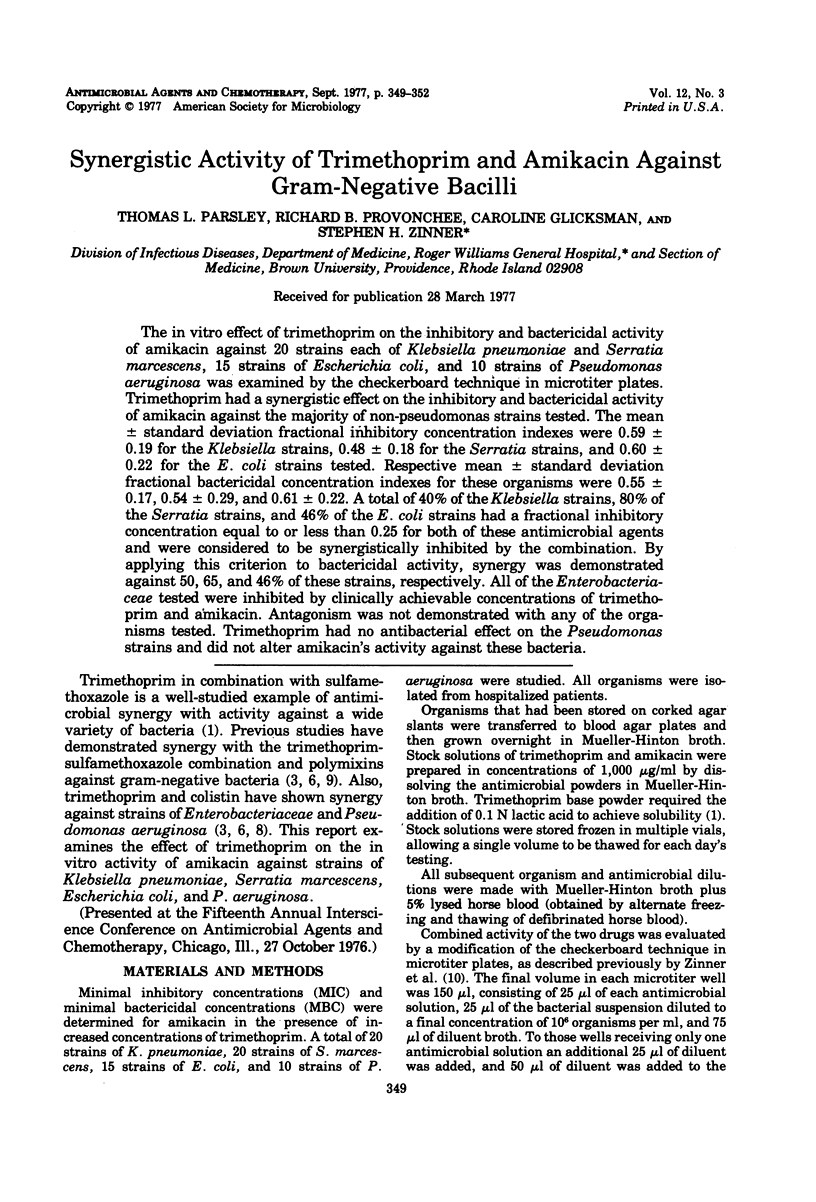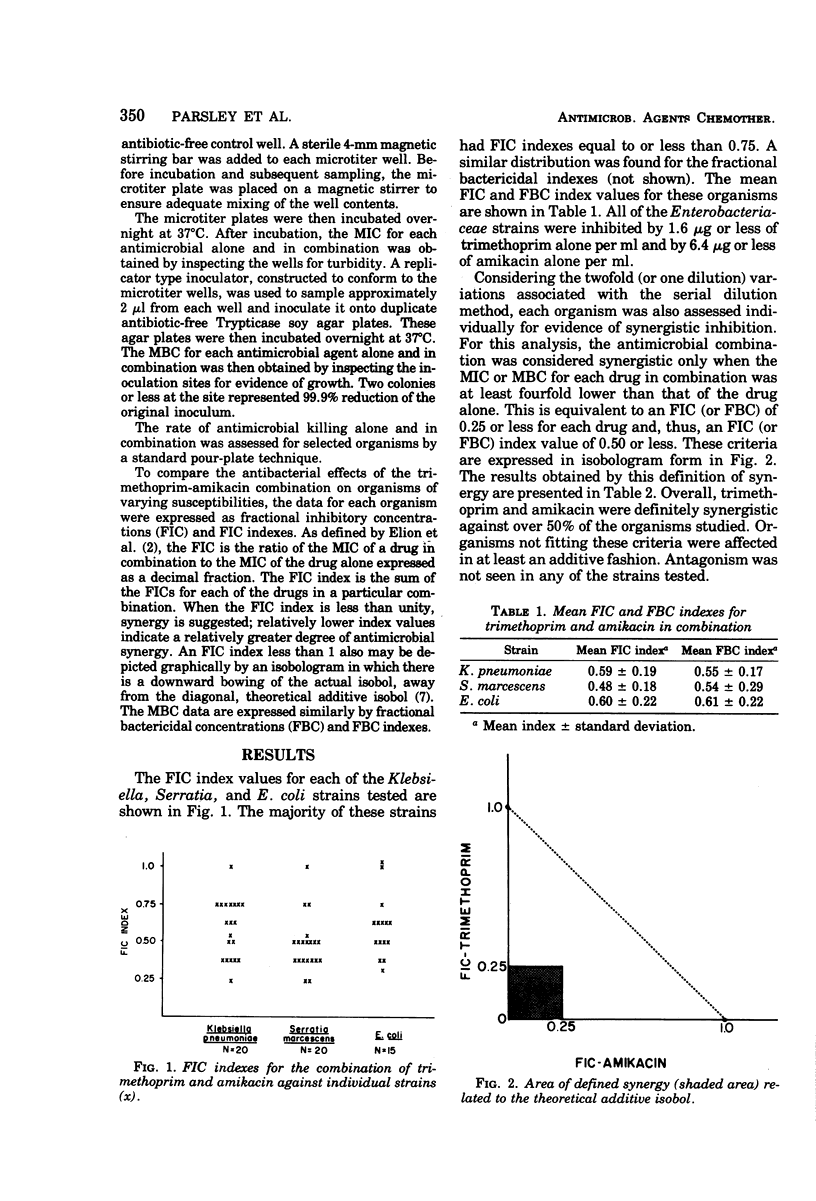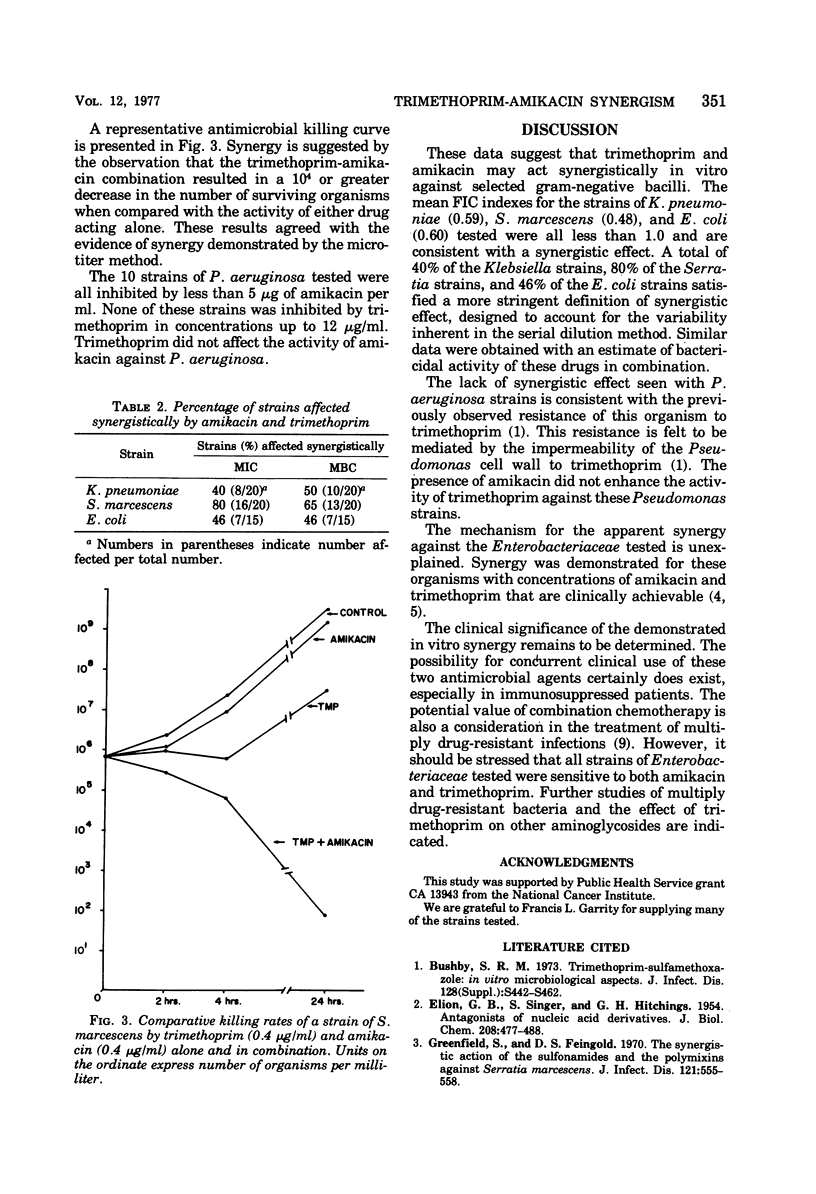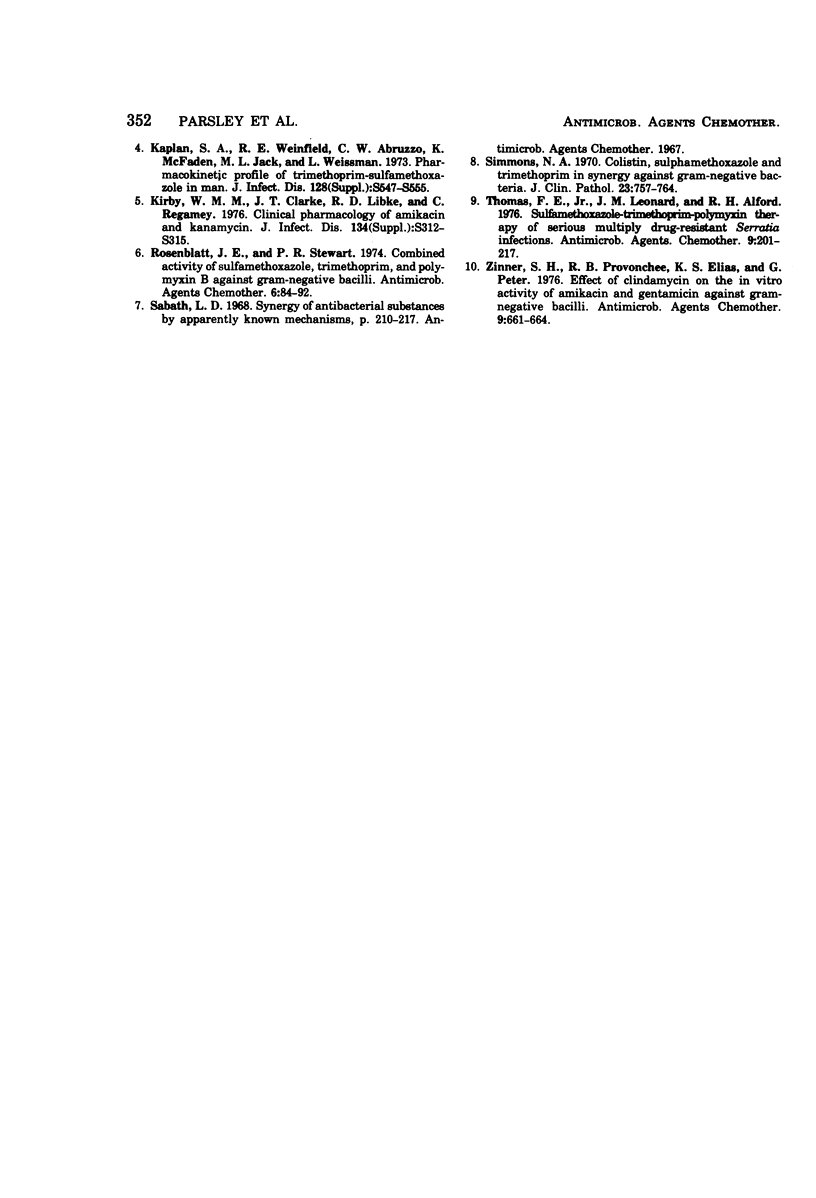Abstract
The in vitro effect of trimethoprim on the inhibitory and bactericidal activity of amikacin against 20 strains each of Klebsiella pneumoniae and Serratia marcescens, 15 strains of Escherichia coli, and 10 strains of Pseudomonas aeruginosa was examined by the checkerboard technique in microtiter plates. Trimethoprim had a synergistic effect on the inhibitory and bactericidal activity of amikacin against the majority of non-pseudomonas strains tested. The mean ± standard deviation fractional inhibitory concentration indexes were 0.59 ± 0.19 for the Klebsiella strains, 0.48 ± 0.18 for the Serratia strains, and 0.60 ± 0.22 for the E. coli strains tested. Respective mean ± standard deviation fractional bactericidal concentration indexes for these organisms were 0.55 ± 0.17, 0.54 ± 0.29, and 0.61 ± 0.22. A total of 40% of the Klebsiella strains, 80% of the Serratia strains, and 46% of the E. coli strains had a fractional inhibitory concentration equal to or less than 0.25 for both of these antimicrobial agents and were considered to be synergistically inhibited by the combination. By applying this criterion to bactericidal activity, synergy was demonstrated against 50, 65, and 46% of these strains, respectively. All of the Enterobacteriaceae tested were inhibited by clinically achievable concentrations of trimethoprim and amikacin. Antagonism was not demonstrated with any of the organisms tested. Trimethoprim had no antibacterial effect on the Pseudomonas strains and did not alter amikacin's activity against these bacteria.
Full text
PDF



Selected References
These references are in PubMed. This may not be the complete list of references from this article.
- ELION G. B., SINGER S., HITCHINGS G. H. Antagonists of nucleic acid derivatives. VIII. Synergism in combinations of biochemically related antimetabolites. J Biol Chem. 1954 Jun;208(2):477–488. [PubMed] [Google Scholar]
- Greenfield S., Feingold D. S. The synergistic action of the sulfonamides and the polymyxins against Serratia marcescens. J Infect Dis. 1970 May;121(5):555–558. doi: 10.1093/infdis/121.5.555. [DOI] [PubMed] [Google Scholar]
- Kirby W. M., Clarke J. T., Libke R. D., Regamey C. Clinical pharmacology of amikacin and kanamycin. J Infect Dis. 1976 Nov;134(Suppl):S312–S315. doi: 10.1093/infdis/135.supplement_2.s312. [DOI] [PubMed] [Google Scholar]
- Rosenblatt J. E., Stewart P. R. Combined activity of sulfamethoxazole, trimethoprim, and polymyxin B against gram-negative bacilli. Antimicrob Agents Chemother. 1974 Jul;6(1):84–92. doi: 10.1128/aac.6.1.84. [DOI] [PMC free article] [PubMed] [Google Scholar]
- Simmons N. A. Colistin, sulphamethoxazole, and trimethoprim in synergy against Gram-negative bacteria. J Clin Pathol. 1970 Dec;23(9):757–764. doi: 10.1136/jcp.23.9.757. [DOI] [PMC free article] [PubMed] [Google Scholar]
- Thomas F. E., Jr, Leonard J. M., Alford R. H. Sulfamethoxazole-trimethoprim-polymyxin therapy of serious multiply drug-resistant Serratia infections. Antimicrob Agents Chemother. 1976 Feb;9(2):201–207. doi: 10.1128/aac.9.2.201. [DOI] [PMC free article] [PubMed] [Google Scholar]
- Zinner S. H., Provonchee R. B., Elias K. S., Peter G. Effect of clindamycin on the in vitro activity of amikacin and gentamicin against gram-negative bacilli. Antimicrob Agents Chemother. 1976 Apr;9(4):661–664. doi: 10.1128/aac.9.4.661. [DOI] [PMC free article] [PubMed] [Google Scholar]


